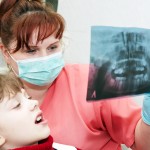
Local anaesthesia (LA) has been used in clinical dentistry since the early 19th century. The most widely used LA is lidocaine hydrochloride which was first clinically available in 1948. Studies have suggested that articaine hydrochloride may outperform lidocaine hydrochloride. Currently there is no clear agreement on which LA is more effective in children.
The aim of this review was to assess the efficacy of 2% lidocaine hydrochloride and 4% articaine hydrochloride (both with epinephrine as vasoconstrictor), and to compare the out- comes, advantages and harms of their use in the provision of pulpal and soft tissue analgesia in clinical paediatric dentistry.
Methods
Searched were conducted in the Cochrane CENTRAL Register of Controlled Trials, Medline, Embase, Cumulative Index to Nursing and Allied Health Literature (CINAHL), and SCI- EXPANDED (ISI Web of Knowledge) databases. Studies that compared articaine with lidocaine for dental treatment in children under 16 years of age were considered.
Two reviewers individually evaluated the studies with quality assessment being based on the Cochrane collaboration risk of bias tool. The primary outcome was pain rated by patients, parental proxy of observer/investigator. Random effects meta-analysis were carried out.
Results
- 6 studies were included.
- The age range of the patients was 5-16 years.
- 3 studies were at high risk of bias, 2 uncertain risk and 1 at low risk.
- 4 studies reported on adverse effects (lip-biting, cheek biting, pain at injection site, tooth tenderness and episodes of aching jaw) – No significant differences between the groups was seen. RR = 1.10 (95%CI; 0.39-3.07).
- No difference was seen in self-reported pain during procedure (3 studies) standardised mean difference [SMD] = 0.06 (95%CI; -0.17 to 0.29)
- Self-reported pain after procedure was lower in patients receiving articaine (4 studies) SMD = 0.37 (95%CI; 0.08 to 0.67)
Conclusions
The authors concluded: –
There is low quality evidence suggesting that both articaine as infiltration and lidocaine inferior alveolar nerve blocks presented the same efficacy when used for routine dental treatments, with no difference between patient self-reported pain between articaine and lidocaine during treatment procedures. Yet, significantly less pain post-procedure was reported following articaine injections. There was no difference in the occurrence of adverse events between articaine and lidocaine injections following treatment in paediatric patients.
Comments
An extensive search strategy has been undertaken for this review and the inclusion criteria are presented in detail although it is unclear whether only English language studies have been included. Only one of the included studies was considered to be at low risk of bias although the random sequence generation element for this study was unclear so others may not have classified this as being at low risk of bias. The overall quality of the included studies is low and this needs to be taken into consideration when considering the findings. One of the studies included in this review we looked at in 2012 ( Dental Elf – 18th Jul 2012).
Links
Primary Paper
Tong HJ, Alzahrani FS, Sim YF, Tahmassebi JF, Duggal M. Anaesthetic efficacy of articaine versus lidocaine in children’s dentistry: a systematic review and meta-analysis. Int J Paediatr Dent. 2018 Apr 10. doi: 10.1111/ipd.12363. [Epub ahead of print] Review. PubMed PMID: 29635712.
Original review protocol on PROSPERO
Other references
Dental Elf – 18th Jul 2012

[…] post Articaine: is it more effective than lidocaine in paediatric dentistry? appeared first on National Elf […]